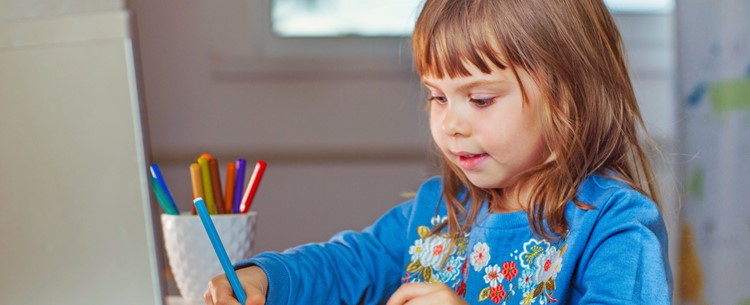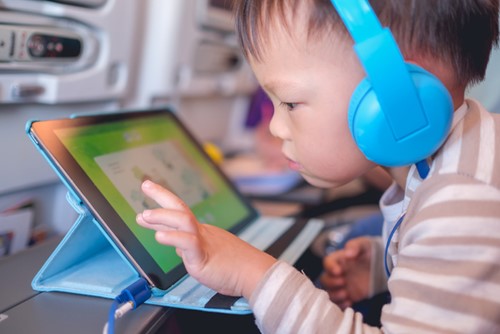
Welcome to my article that outlines what you will learn when you invest in our early childhood education resources about integrating ICT in preschool education.
You will have the opportunity to access over 70 + ICT in early childhood education resources including ICT activities for preschoolers that will accompany our online training for early childhood educators and in our member’s exclusive library.
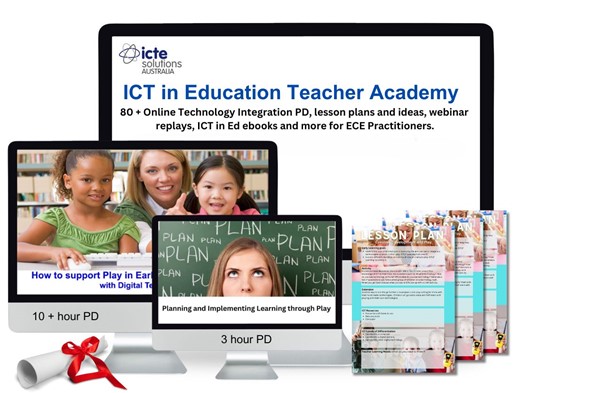
Access them now for just $5.99 per month (Available until 30th December)
Standard monthly $20 AUD per month
What you will learn?
Throughout this article, you will learn more about:
- Benefits of ICT in early childhood education.
- What is ICT in early childhood education (examining the best ICT tools for early childhood education).
- How to create an independent technology-rich early childhood learning environment.
- In Queensland, we call preschool kindergarten, so I will highlight some of our ICT lesson plans for kindergarten
- And I will show you how to successfully integrate ICT in early childhood education.

Sharing the Vision
It is not easy to integrate ICT in preschool settings when not everyone shares the same vision of a technology-rich early childhood learning environment. There may be many different beliefs of individuals within your team that are not aligned or understood.
When you share your beliefs, it can help others to understand each other more effectively and having knowledge of each other’s beliefs can also strengthen and support team dynamics. This will drive the quality of practice in a collaborative way that will consistently promote both individual and team reflections and self-improvement.
Every individual (no matter the size of the staff group they work in) has an important role to play and every individual’s thinking has an influence on the overall teaching and learning of the practice.
If you are in a team where the value placed on ICT in early childhood education is inconsistent and, in some aspects, non-existent, then asking the questions that you will learn whilst applying our technology in early childhood education teaching resources, it will help you resolve why this is the case. You can find these questions as part of my ICT in Education Teacher Academy.
The Importance of ICT in Early Childhood Education
There are many benefits of ICT in early childhood education. The two that I emphasise the most include helping young children view ICT as a tool that is designed to enhance teaching and learning, and to not only develop ICT capabilities but to support the teaching and learning of the curriculum.
The following 10 reasons will highlight the advantages of ICT in early childhood education:
Reason 1
Firstly, young children are already being exposed to ICT tools and as such it already has an effect on them and on the environment and people that surround them.
ICT tools are becoming a ubiquitous component of the physical and social world. It is an important part of the private and work-life of most people, including young children.
Reason 2
This relates to the many opportunities and potential ICT delivers to the teaching and learning of the curriculum.
In early childhood, it can:
- Support and enhance learning and play experiences.
- Support and strengthen your professional learning as an early childhood teacher.
- Support and strengthen your relationships with parents and other people connected to your early childhood education centre.
Reason 3
Many curriculums are now supporting the integration of ICT across the education sector from early childhood to tertiary.
Research shows that the delayed attention to ICT in early childhood has given the sector an advantage that while in the past attention has been given towards getting ICT infrastructure into schools without pedagogical support, the reverse is now occurring.
Reason 4
ICT supports metacognition or ‘learning to learn’. It means knowing that you know and it provides the foundation to what an ICT capable child is.
REASON 5
The use of ICT in early childhood education supports many opportunities for creative development with young children. Through the use of ICT in role plays, they will employ imaginative thinking.
REASON 6
Language development is greatly enhanced when ICT is employed in learning environments. ICT tools and resources such as word processors may appear to be very basic, but remember the power of word processing is in the ease in which children can easily edit and change their writing whilst developing their language and literacy skills.
REASON 7
Children can increase their world knowledge through the use of modern technology such as the Internet.
REASON 8
The many features that ICT brings with it in the learning environment will in the end improve the fine and motor gross skills of children.
REASON 9
Mathematical development is also enhanced as a result of the visual images which computers can provide.
REASON 10
One of the many benefits that will come with the use of ICT in early childhood education is that of collaboration. This alone helps to build language with children in addition to developing their social skills.
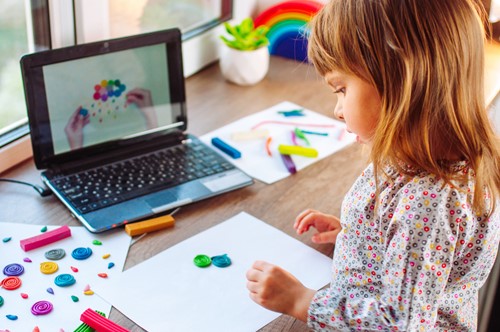
What is ICT in early childhood education?
There is a plethora of ICT tools for early childhood education that early years practitioners can use. Yet, no matter how motivating it can be, teachers can often underestimate children’s confidence and experience with ICT in the youngest children.
The use of technology in early childhood education can cover many grounds in the learning environment. It will be important for you to ensure that the focus is on the child’s learning experience, not the early childhood education technology so that your guidance will never be out of date as learning can be applied to any situation or ICT tool and resources.
It will be your knowledge that will be crucial to the imaginative application of the curriculum to the learning situation. Therefore, if you plan for integration, you will be able to ensure that technology use in early childhood is viewed as an ICT tool to support and enhance teaching and learning, and not just to teach ICT skills instead of ICT capabilities.
The following will provide you with examples of technology use and will outline some of the benefits of technology in early childhood education.
Technology in ECE has a lot to do with how you planned the integration of technology in the curriculum. It is essential that any use of technology in early childhood education is well thought out with your colleagues and that they align with the EYLF goals.
Technology Trends for Literacy and Language Development in Early Childhood
Child development is an example of a smart goal for early childhood teachers these days and there is nothing as important in early learning as the learning of literacy and language.
Computers, of course, offer a great ‘print rich’ learning environment for children, however, there are other ICT tools for teachers as well. They also provide a powerful focus in role play activities. Using the computer in these situations can engage children in the collection or receiving of information.
Word Processors have the biggest impact on classroom learning in this area as word processing is closely associated with literacy and language work at all levels, and as a consequence has a contribution to make across the early years curriculum.
Talking books combine speech and words, and these can reinforce the link between written and spoken text. Although they are designed to encourage reading they should be approached with a certain bit of caution.
Other ICT tools, real or pretend, can have a major impact on a child’s imaginative role-playing experiences in preschool or kindergarten.
Multimedia programs can also play a role as an ICT tool for teachers. Software such as 2Create a Story takes a fresh and innovative approach to early writing, bringing the multimedia possibilities of new technology to children’s story making.
Word banks and grids can also aid in literacy and language development in early childhood as many early childhood teachers are find out. In fact, its success is based on the continuous feedback teachers are providing its makers and which is improving its performance.
Technology trends for Creativity
Creative development is in its own area of learning in the Early Years Learning Framework and like in its counterpart in the UK (EYFS), it is employed to capture children’s development in:
- Responding to experiences, expressing and communicating ideas
- Exploring media and materials
- Creating music and dance
- Developing imagination.
Despite this, it is difficult to define as in this stage of learning it is often linked to painting and drawing. In fact, if you Google creativity in early years you will find references to art. So here are some ways in which early childhood teachers and children can be creative with technology in early childhood.
Technology for Teachers
Documenting is very important in early childhood education as it can make learning visible and ensure that you engage children in the learning process. In early childhood technology for teachers which enables documentation include:
- A full range of digital cameras including webcams, wireless cameras, digital still cameras, smart phone cameras and tablet computer cameras.
- Interactive whiteboards to quickly display children’s experiences.
- Audio recorders,
- Computer software such as MS PowerPoint to share learning journeys
- Digital projectors.
- Software programs to make books
- Talking cards and photo albums to quickly capture children’s comments on their learning.
ICT tools for Children
Children will need time, freedom, support, choices and inspiration to develop their creativity with technology in early childhood. The following you can adapt for your own context:
- Digital cameras – can be used to take photos of their creative play and to exchange ideas. By supporting them in their use you will also be able to encourage them to reflect on the photos they have taken.
- Video cameras – show them how to use it in a creative way such as for a movie making activity.
- Webcams – encourage them to record the process of an activity as they progress.
- Art software – this you can model for them by doing something like making a repeat pattern and printing it out.
- Programmable toys – there is so much value in bee bots and others like Pixie. Create a path on the ground and ask children to program the toy to follow it.
- Smartboards – use these in conjunction with good quality art software and as the children make marks, show them what the range of ICT tools can do. Model using these tools and then stand back and watch the children do with them.
Other Preschool technology trending in Early Childhood Education:
- Interactive websites: examples include Starfall, ABC Ya, Cookie and Fuel the Brain.
- DAP Apps: tablet computers like iPads and even those with Android technologies come with a range of educational and enhancing apps. You can find a list of the best apps for preschool and kindergarten here.
- Educational video sites like BrainPop Jr. and Discovery Education.

How to create an independent learning space for children with tech today
Early childhood learning environments are nurturing spaces for young children in early childhood education. They include classrooms, play spaces, areas for caregiving routines, and outdoor areas. They need to be safe to support the learning and development of young children.
In the realm of early childhood education, creating an optimal early childhood learning environment is crucial for setting children up for success. The early years of a child's life are pivotal in shaping their cognitive, social, and emotional development. As educators, parents, and caregivers, it is essential to understand the key strategies that can ensure a conducive learning environment.
This article delves into the various elements that contribute to an optimal early childhood learning environment. By employing these strategies, educators can foster a love for learning, stimulate curiosity, and promote holistic development in young learners. Whether you are a teacher looking to enhance your classroom or a parent seeking to create a nurturing home environment, this article will provide you with practical insights and actionable tips to create an environment that maximizes learning potential and sets the stage for lifelong success.
One of the primary benefits of an optimal early childhood learning environment is the promotion of holistic development. By providing a well-rounded and stimulating environment, children have the opportunity to develop their cognitive, physical, social, and emotional skills simultaneously. This integrated approach to learning ensures that children receive a comprehensive education that prepares them for future academic and personal success.
Additionally, an optimal learning environment fosters a love for learning and promotes curiosity in young learners. When children are placed in an environment that encourages exploration, discovery, and creativity, they become active participants in their own learning journey. This not only enhances their motivation to learn but also equips them with the necessary skills to become lifelong learners.
Creating an optimal early childhood learning environment is also crucial for addressing individual differences and catering to diverse learning needs. Each child is unique and has their own learning style, interests, and abilities. By providing a flexible and inclusive environment, educators can ensure that all children have equal opportunities to learn and thrive.
Typically, there are three interdependent components of learning environments:
- Physical environment – the overall design and layout of a room;
- Social environment – the interactions that occur within the learning environment between the children, teachers, and family members;
- Temporal environment – the timing, sequence, and length of routines and activities that take place throughout the day.
A good early childhood learning environment promotes independence and autonomy with digital technology and ICT. The following information comes from case studies where I have sorted out the important information that you will need to use ICT to support independence. It will help you create a vision for a technology-enabled learning environment that is child-centred, playful, creative, and interactive.

Creating an independent technology-rich learning space
- Familiarise yourself with all regulations which concern any aspect of using ICT in the ECE centre;
- Remember that your children’s safety is the highest priority;
- Do not accept old hardware which somebody wants to donated to you;
- When selecting software ensure that you adhere to the DATEC criteria;
- Build your ICT space – remember your priorities are (a) safety; (b) functionality and practicality so that you will be able to integrate the ICT resources into different activities; (c) manageability – the successful integration of digital technology can begin with just one computer or iPad; (d) arrangement – you should be able to easily supervise everybody and everything going on in the corner; (e) flexibility – as your needs evolve, the space should allow for future modifications.
- Have the ICT corner connected to the Internet;
- Have new furniture made for that space if possible;
- Pay attention to proper lighting – this must be easily adjustable;
- In addition to the ICT requirements the corner must meet all the requirements for an safe early childhood learning environment;
- If you have IWB you will need to pay attention to its height so that children could easily operate it independently;
- Establish the rules of usage – for your colleagues as well as for the children. Ensure that they are clear, visible and understandable to both children and staff and parents;
- All wires must be hidden.
For children to choose and play independently it is a good idea to have a provision of ICT tools to incorporate into the areas of learning such as:
- Everyday technology or role-play toys;
- Computer and printer;
- Webcam and microphone;
- Carefully chosen software;
- Internet access;
- Interactive whiteboard;
- Digital camera;
- Digital moviemaker;
- Talking photo albums and cards;
- Metal detectors;
- Programmable toys.
Additionally, using tablet computers such as iPads can be used to create a more inclusive early childhood learning environment.
Play and pedagogy are two constructs that have informed recommendations for an early childhood learning environment that should be based on exploration, creativity, imagination, motion, and emotions that integrate play in daily practices in ways that enable them to meet their learning outcomes.
In a digital society, the goals of a technology-rich learning environment should always be empowerment and independence. The value that ICT can add to an early childhood learning environment depends on the choices that you make as an early childhood practitioner about which tools to select, and when and how to use them; your understanding of how these ICT tools can support children’s learning, development, and play.
For you to make these choices will involve you becoming familiar with contemporary theories about learning and development, and recognise how these can be linked to the use of ICT.
To conclude, to integrate digital technologies into play-based learning in early childhood education skilfully it is imperative to consider the affordances of new technologies, alongside the possibilities and the challenges that they bring with them.
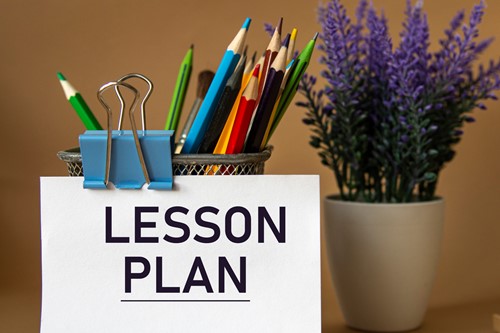
Planning for the Integration of ICT in Early Childhood Education
When ICT is used in an imaginative way to deliver the curriculum and it is woven through all Early Learning Goals, it can improve the quality of what is being taught and learned. The effectiveness of the learning process is also increased.
Planning ensures that all children benefit from a balanced curriculum. It should be based on your understanding of the ways in which young children think and learn.
We have developed focused ICT lesson plans for kindergarten (…preschool in other areas) that supports each of the learning outcomes in the Early Years Learning Framework and the Early Years Foundation Stage.
As all learning outcomes in these early years curricula can be supported with ICT, you might say that the ICT lesson plans for kindergarten are indeed EYLF outcome 5 activities, although there are some that focus on investigating and problem-solving and therefore, would by for EYLF outcome 4 activities.
Nevertheless, our online workshops for kindergarten teachers are supported with all such ICT integrated lesson plans.
Read on to learn more about how we can help you integrate ICT in preschool today.
EYLF outcome 4 activities
"Children resource their own learning by connecting with people, places, technologies, and natural and processed materials"
- Children use ICT in preschool education to investigate and problem-solve.
Bee Bot lesson plans Reception
Programmable toys in educational settings focuses on constructionist teachings and these are underpinned by the idea that learning can happen most effectively when people actively engage with doing and making things.
Playing with bee bots will give the children the opportunity to work with programmable toys. By learning how to input instructions into the keypad of a programmable toy children will have experiences of making things happen.
Watch this replay of one of our free webinars for early childhood educators to learn more about programmable toys.
| Click on the image below to download | ICT Activities |
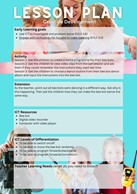 |
With either a white or black piece of cardboard attach a coloured marker on the back of the programmable toy. Encourage the children use the programmable toy to draw their own creations and to problem-solve with it. When completed, pin the creations up on the wall for everyone to see. |
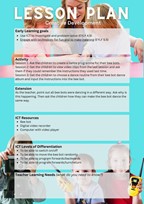 |
Turn the bee bot or the programmable toy that you may have into a butterfly. Beforehand, provide the children with craft materials to create flowers. Then place the flowers on the mats with counters on them. Help the children to instruct the bee bot to collect all the counters from the flowers by introducing appropriate skills and techniques to enhance their learning. |
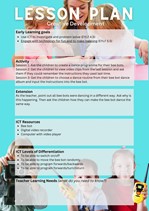 |
Create a street circuit for the programmable toy for the children to role play with. Use building blocks to help guide the bee bot, for example, and the children will need to pretend that it is a school bus. Travel around the circuit to pick up school children. |
To see more bee bot early childhood education lesson plans, visit our resource page now.
EYLF outcome 5 activities
"Children are effective communicators"
- Children use ICT to access information, investigate ideas and represent their thinking
| ICT activities | |
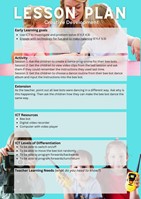 |
Model the use of a drawing and painting program teaching children how to use each of the tools according to their own levels of competence and interest. |
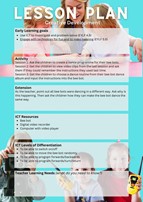 |
Take a photo with a digital camera and open it in a graphics program and paint over the top. |
 |
Place real, toy or hand-made technologies in the role play box for the children to use as props in their play. |
Each of these ICT activities for preschoolers provides ICT enriched learning experiences. ICT tools for early childhood education can be either real working or non-working, toy technology, or made technologies.
Language development activities
As an early childhood teacher, you also plan to apply strategies for language development in early childhood learning activities especially since the ‘CT’ in the ICT stands for communication technology!
Supporting language development in early childhood education can be achieved if the right strategies are applied. Here are a few ICT activities for early years that you can try out today:
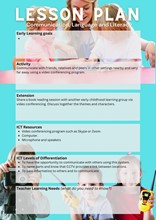 |
For those children who are not confident in communicating with other children provide them with walkie-talkies and ask one to go outside to observe and report on it. |
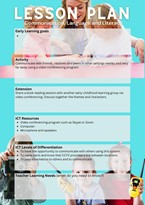 |
Use bee bots to encourage children to use language for directions and positions. |
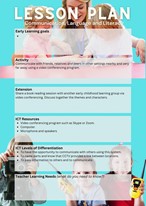 |
Ask the children to help make a collection of books that include pictures showing ICT such as mobile phones and computers. |
I hope that this has helped to explain how ICT can enhance preschool effectiveness. For more information and ICT in early childhood education lesson plans, become a member of my ICT in Education Teacher Academy for just $5.99 per month (cancel anytime).
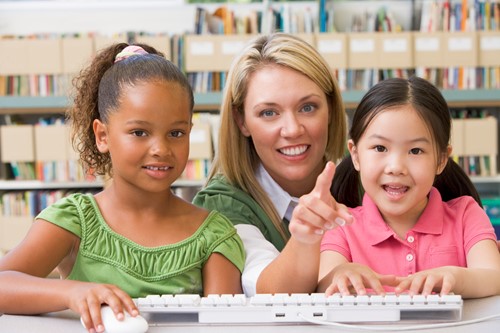
Meaningful Technology Integration in Early Learning Environments
It wasn’t so long ago when the focus was on integrating Information and Communication Technology in early childhood education. This focus has now shifted to young children using digital technology in early childhood environments.
Meaningful technology integration in early childhood education occurs today when practitioners embed strategies in their early childhood environment that support digital play. However, the same practices and principles can be applied to digital play as with ICT in early childhood education as ICT ensures that all children regardless of ability or difficulty can be included in appropriate and meaningful learning opportunities.
Play is considered an important dimension of early childhood environments and digital play through young children interacting with ICT resources can promote their social, emotional, cognitive learning and motor development.
Planning and Implementing play-based learning
If there is to be meaningful technology integration in early childhood environments then it will be imperative that you plan to ensure that digital technologies are viewed as a tool to support and enhance teaching and learning and not simply as a skill to be learned and an ‘add-on’ to the curriculum.
The ideal early childhood learning environment is where ICT or any other digital technologies is used in an imaginative way to deliver the curriculum and is threaded through all the early learning goals of your curriculum and play experiences. This leads to the quality of what is being taught and learned being further developed and the effectiveness of the learning process is increased.
As with all planning, you should focus on specific skills to be taught and learnt, knowledge to be gained and understanding to be developed.
So, what are some examples of meaningful technology integration in early childhood education or digital play in the early years?
Creative development is in its own area of learning within the early learning curriculum. As an educator, you can observe creative acts by noticing how meaningful they are to the child. You will be able to view the level of engagement the child has with the process, the pleasure they take and their focus of their attention.
This is a good example of what meaningful technology integration in early childhood education is all about and you can try some of these ideas to help you get started today:
- Demonstrate on the computer how to make signs, lists, labels and envelopes etc for role play experiences;
- Model the use of drawing and painting software yourself to show how to make repeat patterns for example;
- Encourage children to record the process of activity with a webcam as they progress through it, documenting their learning;
- Tape white chalk onto a bee bot and draw with it on a black piece of paper.
Try these ideas today to make the use of digital technology in early childhood education more meaningful to young children now.
How to Transform your classroom?
The productive process of technology integration in early childhood education is not straightforward. It involves being able to imagine the potential of particular technologies for learning within the contexts in which it will be taught and take place.
It also requires for you as the early childhood teacher to take the risk of experimenting with ICT in early childhood learning environments and is to do with the here and now of the available technologies as opposed to looking to the future for the next big technological development that will somehow solve the problem of technology integration and digital play-based learning in early childhood activities.
This entire production process can be started by a strong-minded principal or early childhood teacher with one simple programmable toy or one digital camera and an ordinary computer.
In this online PD workshop for early childhood educators, I help you to understand this better by providing you with the expertise that you need in order to maximise the use of the available technology in your own work environment so that you will understand the value of having meaningful technology integration in early learning environments today.
I am going to take you through some key points that will get you started now.
What is integration?
To go on from what I discussed earlier, it is important to understand what technology integration is not and these points further squash any misconceptions in the early learning environment.
- Not the use of managed instructional software.
- Not children going to a computer lab to learn ICT skills.
- Not using the Internet to access educational games.
- Not using Integrated Learning Systems such as literacy software or drill and practice software day after day.
- Not replaces an early childhood teacher with a computer.
Meaningful technology integration in early learning environments is an instructional choice that generally requires collaboration and deliberate planning.
When early childhood teachers use technology to introduce, reinforce, extend, enrich, assess and remediate student mastery of curricular targets.
Also when you as the early childhood teacher develop creative, experimental and purposeful learning and play with ICT.
What are the benefits of a meaningful integration?
The benefits of integrating technology in early childhood education are very similar to that of its integration in other educational sectors such as primary education. For me and also for you, the ones that stand out the most include:
- It can develop ICT capabilities and digital literacies.
- It opens up new learning opportunities.
- It can build metacognitive abilities in children and help them ‘learn how to learn’.
- It allows children to engage positively in imaginative active learning.
- Offers feedback in a variety of forms.
- Motivating and encouraging.
You can read about the benefits of ICT in early childhood education in my blogs.
Now let’s look at what a developmentally appropriate digital classroom should look like.
Early Learning classroom environments
True integration of digital technology in early learning environments occurs when the use of technology is routine and ‘transparent’. That is when the children become so focused on using ICT as a tool to achieve other early learning outcomes that they hardly notice that they are using technology itself.
Achieving transparent routines means that they are a part of your unconscious action and this should be the goal of all early childhood teachers for their children – equipping the children with sufficient experience to enable them to use ICT without having to stop and think.
A meaningful technology integration early learning environment would have evidence of technology integration to promote and document learning. For example:
- There would be digital photos of the children and their family.
- Teachers would document children’s block building with digital photos.
- Children would use laptops or a desktop computer.
- Digital microscopes would be present along with headphones and microphones.
Here are some tips to start today:
- Be intentional in your technology practice.
- Infuse technology into many interest areas in the classroom.
- Select an array of devices.
- Extend the learning children initiate during choice time by offering the technology as an option.
- Develop a tracking system in your classroom in order for you to keep track of children’s capabilities with ICT.
What about the Tech?
Some I’ve already mentioned include:
- Digital cameras.
- Digital microscope.
- Document camera.
- Internet.
You might like to add:
- Laptops or desktops
- Tablet computers.
- Mobile phones
- Webcams
- Interactive whiteboards
Remember that technology integration is about imagining the potential for learning of the available technology.
The possibilities are endless but the technology needs to be something that the children are familiar with in their lives and is up-to-date – No out of date tech please!
The Power of Play: How ICT is Enhancing Learning in Preschools
In today's digital age, it's no secret that technology is changing the way we learn and live. And while many may worry about the negative effects of technology on young children, the truth is that when used correctly, technology can actually enhance early childhood education. Enter ICT, or Information and Communication Technology. Preschools around the world are now utilizing ICT to create more engaging and interactive learning experiences for their students. From educational apps to online games, ICT is helping educators tap into the power of play in their classrooms. But what exactly is the power of play, and how is ICT helping to enhance it? In this article, I will explain how ICT can enhance preschool effectiveness by exploring the ways in which ICT is revolutionizing early childhood education, and discuss the benefits and challenges of using technology in the classroom. So buckle up and get ready to discover the exciting world of ICT and early childhood education!
What is ICT in preschool education?
Information and Communication Technology (ICT) refers to the use of digital devices, such as computers, tablets, and smartphones, to access, analyze, and share information. In preschool education, ICT is used to create a more interactive and engaging learning experience for children. ICT tools include educational apps, online games, and devices such as interactive whiteboards and tablets.
ICT is not a replacement for traditional teaching methods but rather a supplement that can enhance learning experiences. The use of ICT in preschool education helps children develop essential skills such as problem-solving, critical thinking, and creativity. ICT also helps teachers to create a more engaging and interactive learning environment that is both exciting and educational.
Benefits of using ICT in preschool education
There are several benefits of using ICT in preschool education. One significant advantage is that it provides children with a more engaging and interactive learning experience. Educational games and apps allow children to learn while having fun, making the learning experience more enjoyable and memorable.
Another benefit of using ICT in preschool education is that it helps teachers to create a personalized learning experience for each child. Educational apps and games can be tailored to the needs of individual children, helping them to learn at their own pace and in a way that suits their learning style.
ICT also allows children to explore new concepts and ideas in a safe and controlled environment. For example, virtual field trips allow children to visit places they may not be able to in real life, such as space, underwater, or historical landmarks. This kind of immersive experience helps children to understand complex concepts in a way that traditional teaching methods cannot.
Examples of ICT tools for preschool education - games, apps, and devices
There are many different ICT tools that can be used in preschool education. Educational games and apps are some of the most popular. For example, apps such as ABCmouse, Khan Academy Kids, and ScratchJr. are designed to teach young children basic concepts such as letters, numbers, and coding. These educational games and apps are not only fun but also help children to develop essential skills such as problem-solving, critical thinking, and creativity.
Another popular ICT tool in preschool education is interactive whiteboards. Interactive whiteboards allow teachers to create interactive lessons that are both engaging and educational. They can also be used to display educational videos, images, and diagrams, making it easier for children to understand complex concepts.
Tablets are another popular ICT tool in preschool education. Tablets allow children to access educational games and apps, as well as educational videos and books. Tablets can also be used to create personalized learning experiences for each child, helping them to learn at their own pace and in a way that suits their learning style.
Challenges of using ICT in preschool education
While there are many benefits to using ICT in preschool education, there are also some challenges. One significant challenge is ensuring that children are not spending too much time in front of screens. While educational games and apps can be beneficial, too much screen time can have negative effects on children's health and development.
Another challenge is ensuring that teachers are adequately trained to use ICT tools effectively. The use of ICT in preschool education requires a different set of skills than traditional teaching methods. Teachers need to be trained to use ICT tools effectively and to create personalized learning experiences for each child.
Finally, there is the challenge of ensuring that children have access to the necessary ICT tools. Not all preschools have the resources to provide each child with a tablet or interactive whiteboard. This can create a divide between children who have access to ICT tools and those who do not.
How to integrate ICT into the preschool curriculum
Integrating ICT into the preschool curriculum requires careful planning and consideration. First, teachers need to identify the learning objectives they want to achieve through the use of ICT. They then need to select the appropriate ICT tools to achieve these objectives.
Teachers also need to ensure that children are using ICT tools in a safe and controlled environment. This may include setting up parental controls on tablets or ensuring that children are supervised while using interactive whiteboards.
Finally, teachers need to evaluate the effectiveness of using ICT in the preschool curriculum. This may include assessing children's learning outcomes and gathering feedback from parents and other stakeholders.
Best practices for using ICT in preschool education
To ensure that ICT is used effectively in preschool education, there are several best practices that teachers should follow. First, they should ensure that children are not spending too much time in front of screens. Screen time should be limited to no more than 30 minutes per day for young children.
Second, teachers should ensure that ICT tools are used to supplement traditional teaching methods, not replace them. ICT tools should be used to create a more engaging and interactive learning experience, not as a replacement for face-to-face interaction.
Finally, teachers should ensure that children have access to a variety of ICT tools, including tablets, interactive whiteboards, and educational games and apps. This will help to create a more personalized learning experience for each child.
Evaluation of learning outcomes using ICT
Evaluating the effectiveness of using ICT in preschool education is essential. Teachers need to assess children's learning outcomes to determine whether ICT tools are having a positive impact on their education. This may include assessing children's cognitive development, language development, and social-emotional development.
Teachers may also gather feedback from parents and other stakeholders to determine whether ICT tools are being used effectively. This feedback can help to identify areas for improvement and ensure that ICT is being used in a way that is beneficial for children.
The Future of ICT in preschool education
The use of ICT in preschool education is still in its early stages, but it is clear that it has the potential to revolutionize the way young children learn. As technology advances, we can expect to see even more innovative and exciting ICT tools being developed for preschool education.
The future of ICT in preschool education is likely to be driven by advancements in artificial intelligence and virtual reality. These technologies have the potential to create even more immersive and personalized learning experiences for children.
Conclusion
The integration of ICT into preschool education is changing the way young children learn. ICT tools such as educational games and apps, interactive whiteboards, and tablets are creating more engaging and interactive learning experiences for children. While there are challenges to using ICT in preschool education, such as ensuring that children are not spending too much time in front of screens, the benefits are clear. The use of ICT in preschool education helps children to develop essential skills such as problem-solving, critical thinking, and creativity. It also allows teachers to create a more personalized learning experience for each child. As technology continues to advance, we can expect to see even more exciting and innovative ICT tools being developed for preschool education.

Creating the Perfect Early Childhood Learning Environment: Tips and Tricks
As parents, educators, and caregivers, we all want to give children the best possible start in life. And one of the most important ways to do that is by creating the perfect early childhood learning environment. But with so much information out there, it can be overwhelming to know where to start. That's where we come in. With years of experience in early childhood education, we've gathered the best tips and tricks for creating a learning environment that nurtures and supports young children's growth and development. From setting up a cozy reading corner to incorporating sensory play and exploration, we'll guide you through the essentials of creating an engaging and effective learning environment for children. So whether you're a parent, teacher, or caregiver, get ready to take your early childhood education to the next level with our expert advice.
The Importance of Creating the Perfect Early Childhood Learning Environment
Creating the perfect learning environment for young children is critical. Early childhood is a time of rapid growth and development, both physically and mentally, and the environment plays an essential role in shaping a child's development. A well-designed learning environment can help young children develop essential skills such as problem-solving, socialization, communication, and creativity. The right environment can also help children feel safe, secure, and comfortable, which is essential for learning.
Understanding the Needs of Young Learners
Before designing the learning environment, it's essential to understand the needs of young learners fully. Young children are naturally curious, and they learn best through play, exploration, and hands-on experiences. They also need plenty of opportunities to move, interact with others, and engage in different types of sensory experiences. Understanding these needs can help you design a learning environment that supports and nurtures their growth and development.
Designing the Physical Space for Learning
Designing the physical space for learning is one of the most critical aspects of creating an early childhood learning environment. The space should be designed to be safe, comfortable, and engaging for young children. It should also be designed to promote exploration, creativity, and socialization. Here are some tips to help you design the perfect physical space for learning:
- Create a cozy reading corner with a variety of books and comfortable seating options.
- Use colorful, kid-friendly decorations and furniture to make the space more inviting.
- Provide ample space for children to move around and engage in physical activities.
- Create different learning centers for different types of activities, such as art, science, and dramatic play.
- Use natural light and open spaces to create a warm and welcoming environment.
Choosing the Right Materials and Resources
Once you have designed the physical space, it's time to choose the right materials and resources to support learning. The materials and resources should be age-appropriate, engaging, and promote different types of learning experiences. Here are some things to consider when choosing materials and resources:
- Choose materials that promote hands-on learning and exploration, such as blocks, puzzles, and sensory materials.
- Use technology as a tool for learning, such as tablets or computers, but limit screen time and ensure that the technology is age-appropriate.
- Use a variety of materials for different types of activities, such as art supplies, musical instruments, and science tools.
- Choose materials that promote diversity and inclusivity, such as books and toys that feature people from different backgrounds and cultures.
Integrating Technology into the Learning Environment
Technology can be a powerful tool for learning, but it should be used judiciously in early childhood education. When used correctly, technology can provide children with access to a wealth of learning opportunities that they may not otherwise have. Here are some tips for incorporating technology into the learning environment:
- Use technology as a tool for learning, such as educational games or apps that promote different types of learning experiences.
- Limit screen time and ensure that the technology is age-appropriate.
- Use technology to supplement hands-on learning experiences, not replace them.
- Monitor children's use of technology and ensure that they are using it safely and responsibly.
Creating a Schedule and Routine for Young Learners
Young children thrive on routines and schedules, and creating a consistent schedule can help them feel safe and secure in the learning environment. Here are some tips for creating a schedule and routine for young learners:
- Create a consistent daily schedule that includes time for different types of activities, such as circle time, free play, snack time, and outdoor play.
- Use visual aids, such as pictures or a daily schedule chart, to help children understand the routine.
- Be flexible and willing to adjust the schedule as needed to meet the needs of individual children or the group as a whole.
- Establish clear rules and expectations for behavior and reinforce them consistently.
Building Relationships and Fostering a Sense of Community
Building relationships and fostering a sense of community is essential for creating a positive learning environment. Young children need to feel connected to others and have a sense of belonging in the learning environment. Here are some tips for building relationships and fostering a sense of community:
- Get to know each child as an individual and take an interest in their interests and experiences.
- Encourage children to interact with one another and provide opportunities for socialization and group activities.
- Provide positive feedback and praise for children's efforts and achievements.
- Establish open communication with parents and caregivers and involve them in the learning experience.
Tips for Maintaining a Safe and Healthy Learning Environment
Maintaining a safe and healthy learning environment is critical for children's well-being and learning. Here are some tips for maintaining a safe and healthy learning environment:
- Ensure that the learning environment is clean and free from hazards or potential safety risks.
- Provide healthy snacks and meals and encourage good nutrition and exercise habits.
- Follow proper hygiene practices, such as washing hands regularly and covering coughs and sneezes.
- Have a plan in place for emergencies or unexpected situations.
Evaluating and Adapting the Learning Environment
Finally, it's essential to evaluate and adapt the learning environment regularly. As young children grow and develop, their needs and interests will change, and the learning environment needs to evolve accordingly. Here are some tips for evaluating and adapting the learning environment:
- Observe children's behavior and engagement in different activities and make adjustments as needed.
- Get feedback from parents and caregivers about their children's experiences in the learning environment.
- Stay up-to-date on best practices and trends in early childhood education and incorporate them into the learning environment.
Conclusion
Creating the perfect early childhood learning environment is critical for young children's growth and development. By understanding the needs of young learners, designing the physical space for learning, choosing the right materials and resources, incorporating technology, creating a schedule and routine, building relationships, maintaining a safe and healthy environment, and evaluating and adapting the learning environment, you can create a nurturing and supportive environment that promotes learning and sets children up for success in their formative years and beyond.

